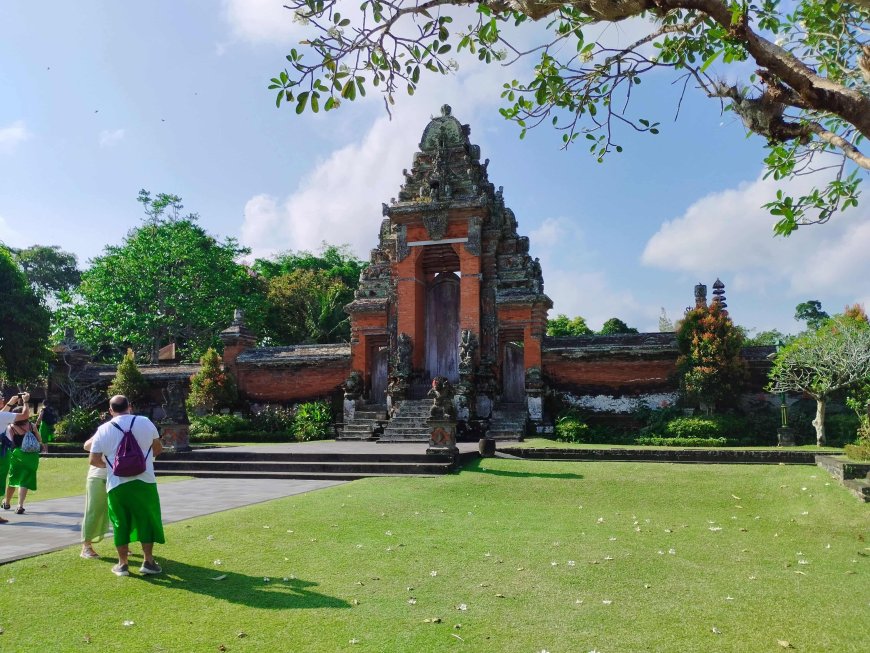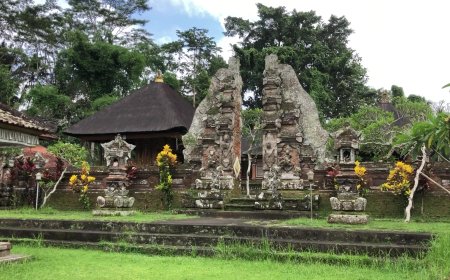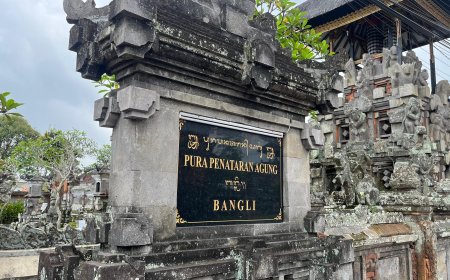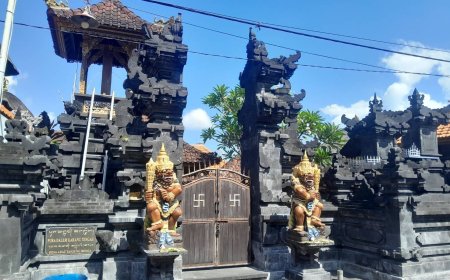Taman Ayun Temple: A Beautiful Silent Witness of the Heyday of the Mengwi Kingdom
Taman Ayun Temple is a historic temple site in Bali, built in 1632 and recognized as a world cultural heritage by UNESCO in 2012. This temple has three parts: Nista Mandala, Madya Mandala, and Utama Mandala. Visitors can access most of the temples, but the Main Mandala area is the most sacred and can only be accessed by the royal family. The construction process involved a Chinese architect named Tan Hu Cin Jin.

Taman Ayun Temple is located in Mengwi district, Bali and is one of the beautiful architectural relics that is also a proof of the glory of the Mengwi Kingdom in the past. Mengwi Kingdom once controlled almost the entire mainland of Bali and also the Blambangan area, Banyuwangi, East Java. However, Mengwi Kingdom met the end of its heyday when the tenth King of Mengwi, the history of this temple began in 1556 Saka (1634 AD). The construction of Taman Ayun Temple was completed in 1634, when the king I Gusti Agung Putu from Mengwi Kingdom who at that time also had several other names "Mangapura", "Mangarajia", and "Kawiyapura".
Infact, I Gusti Agung Putu established a temple in the north of Mengwi Village as a place of worship for his ancestors. The temple was originally known as Taman Genter. When Mengwi became a prosperous kingdom, I Gusti Agung Putu decided to move Taman Genter to the east and expand the building. The temple that has undergone expansion was officially renamed Taman Ayun Temple on Tuesday Kliwon-Medangsia fourth month of 1556 Saka. Until now, every Kliwon Tuesday according to the Saka calendar, this temple is the venue for holding piodalan (ceremonies) to celebrate the anniversary of the temple's founding.
The construction process was quite interesting, with the help of an architect of Chinese descent named Tan Hu Cin Jin. Although Tan Hu Cin Jin was initially reluctant to participate, he was eventually ordered by the ruler of Blambangan to be involved in this project. Taman Ayun Temple was completed in 1634. Taman Ayun Temple has undergone several renovations. A major renovation was carried out in 1937. In 1949 renovations were carried out on the kori agung, gapura bentar, and the construction of a large wantilan. The third renovation was in 1972 and the last in 1976.
In 2012, along with several other cultural sites in Bali, such as Ulun Danu Batur Temple, Taman Ayun Temple was recognized as a world cultural heritage by UNESCO. The decision to establish UNESCO is a sign of appreciation for the wisdom of the global community on the values of local wisdom applied by the Balinese people. These values include Tri Hita Karana, which depicts balance and harmony between man, the environment, and God Almighty. One example can be found at Taman Ayun Temple.
Taman Ayun Temple has several important functions. Taman Ayun Temple is a place to pray for residents around Mengwi, in particular, and also residents from other districts during the Anggara Kasih Medangsia piodalan ceremony which is held every 210 days and is attended by various groups, especially for those who still feel connected to the Mengwi Kingdom. Apart from being a place of prayer, it also acts as a unifier of the dynasty and has a role in socio-economic aspects. Taman Ayun Temple also has an art gallery, temple miniatures and a theater about the history and ceremonies at Taman Ayun Temple. This gives visitors a clearer picture of the various aspects of Taman Ayun Temple and also about the diversity of Hindu religious beliefs in Bali.
The name "Taman Ayun" itself means "Beautiful Garden" and this temple is indeed one of the most beautiful in Bali. The temple grounds are neatly designed and surrounded by fish ponds which add to the charm of this place. This temple is divided into three parts, starting from the lowest, namely Nista Mandala, which can only be accessed via a bridge that crosses the pond and gate. This section is the main entrance to the temple complex and is the first stage on the journey to the temple interior. The name "Nista Mandala" comes from the Balinese language, where "Nista" means "lowest" or "very low" and "Mandala" refers to the "sacred realm" or "area considered sacred."
At Nista Mandala, visitors will find a bridge that connects the mainland with the inside of the temple complex. This bridge crosses the fish pond that surrounds the temple, creating a beautiful view and adding to the sacredness of this place. As the initial stage to deeper into the temple, Nista Mandala is the place where visitors begin to feel the sacred atmosphere of Taman Ayun Temple.
Even though the Nista Mandala is the lowest part of the temple, this does not mean it is less important. It is the first stage in a spiritual journey into the deeper parts of this temple complex. This section also provides an interesting visual experience with fish ponds and beautifully designed gardens. When entering Nista Mandala, visitors will find a protected monument, which is the linggih or place for Siluh Rsi, the ruler of spirits in Taman Ayun.
Utama Mandala Taman Ayun Temple (Source Photo : Koleksi Redaksi)
Next, visitors will continue to Madya Mandala, which is the central part of the temple. At Madya Mandala, visitors will find more complex architectural structures, such as Meru (a multi-story building with a distinctive thatched roof) which functions as a place of prayer and a place for placing sacred statues. Visitors can enjoy the beautiful surrounding views while exploring this area.
Then head to the most sacred part, namely the Utama Mandala, which can only be seen from the outside by the general public. Taman Ayun Temple, with its three levels of mandalas, reflects the spiritual order of Balinese Hinduism and depicts respect for ancestors and the beauty of the natural surroundings. Unfortunately, the general public is not allowed to enter this area, because Utama Mandala is a special place of pray for the royal family who come to pay respects to their ancestors.
Taman Ayun Temple is one of the popular tourist destinations in Bali. Surrounded by a large pond that resembles a lake, this place is often a relaxing place for local residents in the afternoon when they enjoy fishing in the pond. The location is in Mengwi District, Badung Regency, Bali Province, about 15 km from Denpasar so visitors can reach it easily by motorbike or car. For navigation assistance, visitors can open the Google Maps application and search for "Taman Ayun Temple" to get route directions.
Taman Ayun Temple is a family temple which has three parts, namely Nista Mandala, Madya Mandala, and Utama Mandala. Most of the Utama Mandala area, which is the most sacred part of the temple complex, is not permitted to be accessed by the general public. This area is used exclusively by family great kings for religious ceremonies and honoring their ancestors. Although general public visitors are not permitted to enter this area, they can still view it from the outside and take photos or videos while walking around it. Visitors can still see the situation inside the Utama Mandala area from the outside while walking around it. Inside the Utama Mandala, visitors will find larger sacred buildings and the tombs of revered ancestors. The part that is more open to visitors is the Madya Mandala, which is the central part of the temple. Here, visitors may have the opportunity to perform private prayers or religious ceremonies with respect, as long as visitors follow the applicable rules and etiquette.
Although some parts may be restricted to the general public, Taman Ayun Temple remains one of the interesting tourist destinations in Bali with its history and unique architecture. It is open to the public every day of the week and offers a valuable spiritual and cultural experience. If visitors plan to perform prayers or religious ceremonies at this temple, consider speaking with temple administrators or local sources for more specific guidance.





























































